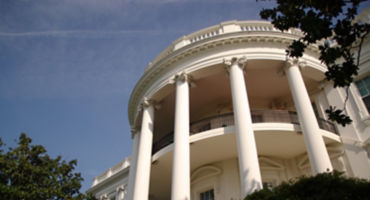- Geopolitical Strategist
Skip to main content
- Funds
- Capabilities
- Insights
- About Us
Asset classes
Hong Kong (香港), Individual
Changechevron_rightThe views expressed are those of the author at the time of writing. Other teams may hold different views and make different investment decisions. The value of your investment may become worth more or less than at the time of original investment. While any third-party data used is considered reliable, its accuracy is not guaranteed.
The first Trump administration isn’t a perfect analogy for assessing what kind of US foreign policy we should expect over the next four years. Unlike the first time around, we now have the largest war in Europe in decades, the biggest conflict in the Middle East in decades, increasing military tensions in the Taiwan Strait and South China Sea, as well as a rapidly fracturing global order that pits China/Russia/Iran/North Korea against the US/NATO/Japan/South Korea/Australia blocs. In addition, we are seeing the increasingly negative national security implications of climate change. These shifts in the geopolitical backdrop are structural, long term, and will likely continue regardless of this election result.
US national security policies will matter to this backdrop, and I expect the following in a second Trump administration:
All of this remains supportive of existing long-term national security investment themes, including legacy defense, defense innovation, and in particular, climate adaptation given that there will likely be less momentum toward decarbonization at the federal level over the next four years; this backdrop will also likely accelerate disruption/differentiation across regional, country, industry, company, and asset class levels — again, an ongoing positive for active management.
Expert

Fiscal versus tariffs: what wins out for Europe?
Continue readingFour investment perspectives amid a pivotal US election
Continue readingMultiple authors
Harris vs Trump: The foreign policy and investment implications
Continue readingBy
China’s economy: Poised to exceed expectations in 2023
Continue readingMultiple authors
By
URL References
Related Insights


Multiple authors

By

Fiscal versus tariffs: what wins out for Europe?
Just as investors were starting to explore the potential for growth in Europe, Trump’s tariffs landed. To what extent is the case for Europe still intact?

Four investment perspectives amid a pivotal US election
How can investors reposition portfolios for a pivotal but highly unpredictable US elections? Nick Samouilhan explores potential avenues in conversation with three leading portfolio managers.
Multiple authors

Harris vs Trump: The foreign policy and investment implications
Our expert examines expected Harris and Trump foreign policies and their potential impact on the investment landscape.
By

China’s economy: Poised to exceed expectations in 2023
With the bar set so low for China's economy, Macro Strategist Santiago Millan thinks it won't take much for an upside surprise in 2023.


Multiple authors

By

Fiscal versus tariffs: what wins out for Europe?
Just as investors were starting to explore the potential for growth in Europe, Trump’s tariffs landed. To what extent is the case for Europe still intact?

Four investment perspectives amid a pivotal US election
How can investors reposition portfolios for a pivotal but highly unpredictable US elections? Nick Samouilhan explores potential avenues in conversation with three leading portfolio managers.
Multiple authors

Harris vs Trump: The foreign policy and investment implications
Our expert examines expected Harris and Trump foreign policies and their potential impact on the investment landscape.
By

China’s economy: Poised to exceed expectations in 2023
With the bar set so low for China's economy, Macro Strategist Santiago Millan thinks it won't take much for an upside surprise in 2023.


Multiple authors

By
URL References
Related Insights
DISCLOSURE
This material and its contents may not be reproduced or distributed, in whole or in part, without the express written consent of Wellington Management. This document is intended for information purposes only. It is not an offer or a solicitation by anyone, to subscribe for shares in Wellington Management Funds (Luxembourg) III SICAV (the Fund). Nothing in this document should be interpreted as advice, nor is it a recommendation to buy or sell shares. Investment in the Fund may not be suitable for all investors. Any views expressed are those of the author at the time of writing and are subject to change without notice. Investors should carefully read the Key Facts Statement (KFS), Prospectus, and Hong Kong Covering Document for the Fund and the sub-fund(s) for details, including risk factors, before making an investment decision. Other relevant documents are the annual report (and semi-annual report).
© 2025 Morningstar, Inc. All Rights Reserved. The information contained herein: (1) is proprietary to Morningstar; (2) may not be copied or distributed; and (3) is not warranted to be accurate, complete or timely. Neither Morningstar nor its content providers are responsible for any damages or losses arising from any use of this information. The Overall Morningstar Rating for a fund is derived from a weighted average of the three, five, and ten year (if applicable) ratings, based on risk-adjusted return. Past performance is no guarantee of future results.
Issued by Wellington Management Hong Kong Limited. Investment involves risk. Past performance is not indicative of future performance. This document has not been reviewed by the Securities and Futures Commission of Hong Kong.
We seek to exceed the investment objectives and service expectations of our fund investors and their advisers worldwide
© Copyright 2025 Wellington Management Hong Kong Limited. All rights reserved.
WELLINGTON MANAGEMENT® is a registered service mark of Wellington Group Holdings LLP.
Wellington Management Hong Kong Limited 威靈頓管理香港有限公司 is a private company incorporated with limited liability in Hong Kong, with its address at 17/F Two International Finance Centre, 8 Finance Street, Central, Hong Kong. It is licensed and regulated by the Securities and Futures Commission of Hong Kong with CE Number AJB478.